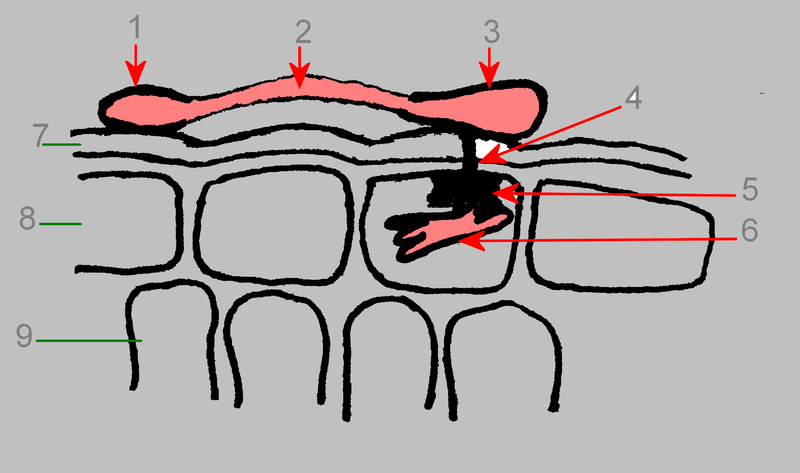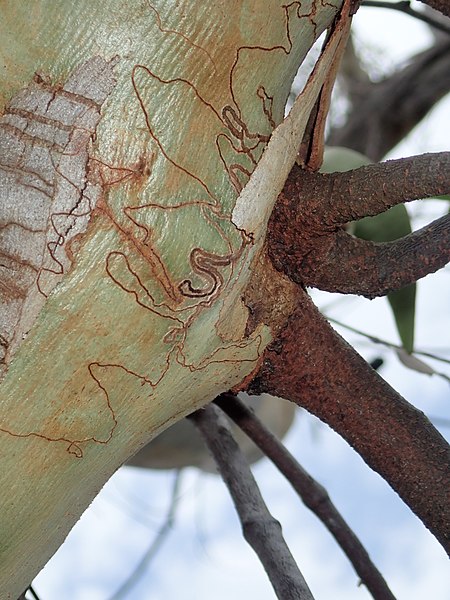Difference Between Appressorium and Haustorium
The key difference between appressorium and haustorium is that appressorium forms bulb-like structures upon infection, while haustorium forms root-like structures upon infection.
Plant fungal diseases are very common in soil fungi. These fungi form special structures that are capable off penetrating the plant systems, thereby leading to the onset of infections. Moreover, these are parasitic relationships where the host is not benefited. Appressorium and haustorium are two such formations of fungi during the invasion of plant cells.
CONTENTS
1. Overview and Key Difference
2. What is Appressorium
3. What is Haustorium
4. Similarities Between Appressorium and Haustorium
5. Side by Side Comparison – Appressorium vs Haustorium in Tabular Form
6. Summary
What is Appressorium?
Appressorium is a specialized cell type that is present in fungi. They are commonly present in fungal pathogens that cause plant infections. Appressorium is a flattened hyphae structure. Furthermore, this structure is capable of entering the host and growing inside the host. The germ tube formation takes place inside the host in response to chemical and physical stimulations.
The appressorium formation begins at the tip of the fungal germ tube. Moreover, the mobilization of the spore contents to the appressorium takes place next, leading to the formation of the septum at the neck of the appressorium. Therefore, appressorium forms bulb-like structures on plants upon infection.

Figure 01: Appressorium
Moreover, during the maturation of the appressorium, it firmly attaches itself to the plant surface. The mature appressorium then secretes a dense layer of melanin. With the secretion of melanin, the turgor pressure inside the appressorium increases and this drives the penetration of the hyphae into the plant cuticle, causing the infection. Besides, appressorium is responsible for fungal rust in plants.
What is Haustorium?
Haustorium is a root-like structure formed by the fungi. They grow towards the ground. Furthermore, the main function of haustorium is to absorb nutrients and water from the soil. Haustorium is an important structure in fungi that enables the fungi to infect plants. Thus, haustorium can penetrate plant roots and absorb the plant nutrients. It is a feature of parasitic fungi.

Figure 02: Haustorium
The haustorium can penetrate in between the cell wall and plasma membrane of the plant cell. Moreover, they possess a siphon like action that facilitates the absorbance of nutrients from plants.
What are the Similarities Between Appressorium and Haustorium?
- Both are structures present in fungi
- They are capable of penetrating into plant host cells.
- Both absorb nutrients and water.
- Moreover, these structures are important in the development of plant fungal diseases.
What is the Difference Between Appressorium and Haustorium?
Appressorium and haustorium are very similar structures of pathogenic fungi that participate in causing plant diseases. However, the key difference between appressorium and haustorium is the structures they form upon infection; appressorium forms bulbous structures while haustorium forms root-like structures upon infection.

Summary – Appressorium vs Haustorium
Basically, appressorium and haustorium are two structures present in most parasitic fungi. Moreover, they penetrate the plant hosts and cause infections in the plants. Upon penetration, they absorb plant nutrients causing harm to the plant host. The key difference between appressorium and haustorium is that the former forms bulbous structures while the later forms root-like structures.
Reference:
1. Moore, David, et al. “21st Century Guidebook to Fungi, SECOND EDITION, by David Moore, Geoffrey D. Robson and Anthony P. J. Trinci.” 14.14 Direct Penetration of the Host Cell Wall, 1 July 2019, Available here.
Image Courtesy:
1. “Appressorium 2” By drawing: User:Rasbak. modification: User:Selso – https://commons.wikimedia.org/wiki/File:Appressorium.png (CC BY-SA 4.0) via Commons Wikimedia
2. “Haustorium P1120275 (38757316935)” By Margaret Donald from Sydney, Australia – P1120275 (CC BY-SA 2.0) via Commons Wikimedia
ncG1vNJzZmivp6x7pbXFn5yrnZ6YsqOx07CcnqZemLyue8OinZ%2Bdopq7pLGMm5ytr5Wau26tz6mpnqujpL%2BqwcxmmKecXZ2utr%2FTqKmirZ1k